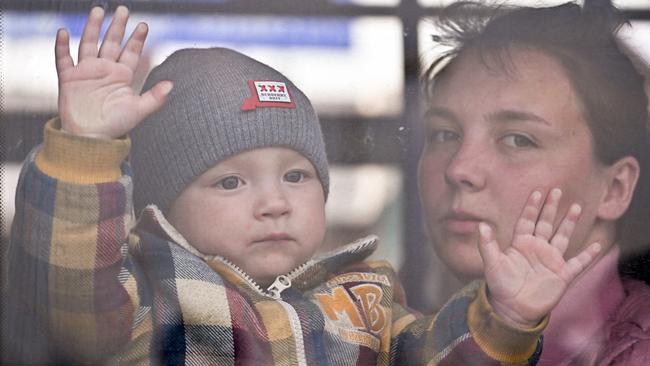Four million refugees have now fled war in Ukraine, says UN
Figure exceeds organisation’s highest prediction for whole war and 10.5 million people uprooted or forced abroad.

The number of people fleeing the war in Ukraine has exceeded four million, the UN says, surpassing the refugee count the organisation predicted for the entire war in just under five weeks.
The exodus was already the largest movement of people in Europe since World War II and the UN refugee agency had previously estimated four million people could be driven from the country as a result of Russia’s invasion.
Though the scale of humanitarian flight has slowed in recent days, UNHCR also said many millions have been displaced within Ukraine, with 10.5 million people uprooted either within the country or forced abroad. Some 12 million are trapped in areas affected by the war and unable to leave, the agency said.
In almost five weeks since President Vladimir Putin began his assault on Ukraine, some 4,019,287 people – most of them women and children – have escaped the fighting. A law in Ukraine imposed at the start of the invasion prevents men of fighting age from leaving the country.
Most of the refugees have crossed into neighbouring Poland where, by Wednesday night, about 2.4 million had arrived, according to the Polish border guard. Hundreds of thousands of others have escaped to Hungary, Moldova, Slovakia and Romania.
Before Russia’s invasion, Polish authorities thought the influx of Ukrainians into Poland would top out at one million people, over the course of the war.
Visa-free travel in the EU makes it difficult to track where refugees have gone from their first destination after leaving Ukraine, but the UNHCR estimates that a large number have moved on. For example, of the 385,000 refugees who arrived in Moldova since the war began on February 24, some 287,300 have since left.
The EU has granted Ukrainian refugees the right to live and work in the bloc for up to three years.
More than 350,000 people have left Ukraine for Russia.
The tide of refugees from Ukraine has ebbed in recent days. The number crossing into Poland was 22,400 on Tuesday, down from a peak of 140,877 on March 6. The numbers going into Moldova have also levelled off at around 2000 a day in the past week, compared with around 20,000 a day at the start of the month.
There are virtually no refugee camps in Poland, aside from a handful of convention centres and stadiums that the government terms “reception centres”, where a few thousand of the millions who have entered the country sleep. Instead, Poland is counting on relatives, friends and volunteers to house the newcomers. That arrangement is becoming increasingly hard to sustain, however, as the rate of people arriving outpaces the number of beds available.
In a poll conducted by UNHCR and Intersos, a non-profit organisation, of 215 Ukrainian refugees in Poland, 41 per cent said they intended to return to Ukraine and 29 per cent said they hadn’t decided whether to do so. Over 20 per cent said they intended to move to another country.
Some people though are going back to Ukraine, whether to fight or for personal reasons.
Some 550,000 Ukrainians – mostly men – have returned to the country since the start of the war, said Andriy Demchenko, spokesman for the Ukrainian Border Guard Service. The reason for their return isn’t recorded at the border, he said. But many have expressed that they are unable to stay away while their country is at war with Russia “and are coming back to speed up the end of Russian aggression either as part of the Armed Forces of Ukraine or in other ways”, Mr Demchenko said.
President Joe Biden at the weekend pledged that the US would accept up to 100,000 Ukrainians fleeing the war.
In Germany, to accommodate arrivals from Ukraine, authorities have reopened refugee shelters that were used in 2015-16, at the height of the Syrian war. The UK, which has been criticised for not acting faster to take in more refugees, is offering £350 ($610) a month to people who host a Ukrainian refugee in their home and hasn’t set an upper limit on figures.
The Wall Street Journal



To join the conversation, please log in. Don't have an account? Register
Join the conversation, you are commenting as Logout